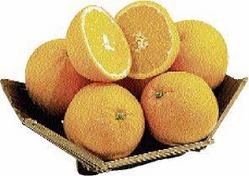Beware of no-sugar-added juices
Published: Wednesday | January 21, 2009

DIETITIAN'S DESK
Several juices are available on the market and making the right choice can be challenging. The juice options of '100 per cent juice', 'made from concentrate' and 'no sugar added' are offered as wholesome. There are a great many individuals, including those seeking to reduce their calories and those watching their blood sugar, who feel safe with the no-sugar-added option.
100 per cent juice
This is all juice without the fibrous pulp. These commercial preparations must be pasteurised to destroy harmful microorganisms such as E coli. Pasteurisation, however, destroys the flavour and, in the older methods, the heat labile vitamins such as vitamin C are added back after pasteurisation. There is a new method of pasteurisation called flash or high temperature short time. The juice is processed for 15 to 30 seconds at temperatures of 71.5 to 74 degrees Celsius (160 to 164 degrees F). This method preserves the colour and flavour of the juice.
Made from concentrate
This is freshly squeezed juice which is pasteurised then evaporated under vacuum heat to remove most of the water before it is then frozen. The juice is concentrated to approximately 65 per cent brix (brix indicates the sugar concentration), the evaporation not only removes water but essential oils which add to flavour. The oils are re-added at the end of the process to restore flavour. Water is added to the concentrate to take it to a brix level of 42 per cent (three times sweeter than fresh juice) before it is frozen into concentrate for sale. The frozen concentrate can be reconstituted by adding water.
No sugar added
This is either 100 per cent juice or juice from concentrate which is sold without sugar being added to the processing. It is true that 100 per cent juice and even that reconstituted from concentrate contain more of the original nutrients than juice drinks and cocktails which have small amounts of juice, large amounts of water and are sweetened with either sucrose or high fructose corn syrup.
Consumers must however be aware that although the manufacturers did not add sugar during processing, fruits do have sugars naturally. So if you are consuming juice, you are consuming sugars as well.
Prepared juices are convenient and easy to consume and therefore large amounts are consumed. For people concerned about sugar consumption, read the labels on the fruit juices, identify the total carbohydrate content per serving, identify the serving size, (most times it is one cup/eight ounces). If one serving contains, for example, 35 grams of carbohydrate, this is usually sugar and is equivalent to the blood sugar bang of about two slices of bread. So no sugar added does not mean no sugar included.
Whole fruit
Whole fruits are advantageous in a myriad of ways over juices, especially for people wanting to minimise calories and others concerned about the effect of consumed sugars on their blood sugar levels. Whole fruits have the pulp and membranes which are excellent fibre, flavour, and most of its nutrients in tact. Whole fruits are filling and so will create a sense of satisfaction. One small fruit is equivalent to four ounces of juice (1 mouthful).
A word of caution - although juices can be healthy, it doesn't mean one should go drowning in them. Eat a fruit instead; it will fit better into your plan for calorie reduction.
Rosalee M. Brown is a registered dietitian/nutritionist who operates Integrated Nutrition and Health Services; email: yourhealth@gleanerjm.com.



